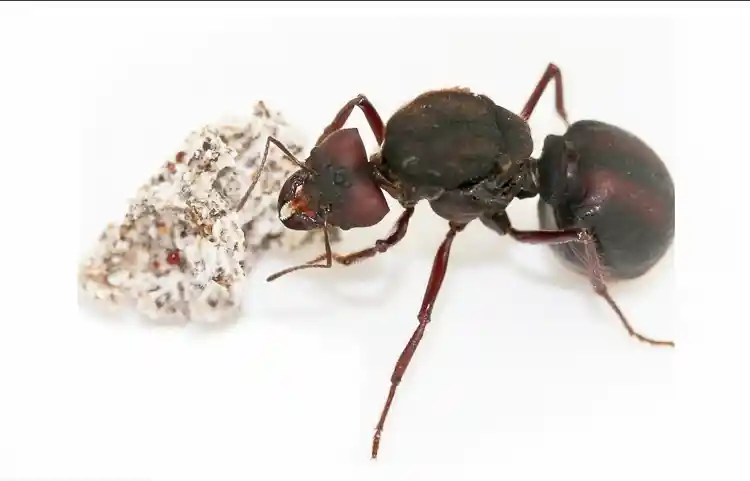Free UK Delivery on orders over £99
Atta laevigata Leafcutter Ant
179.99
Atta laevigata Leafcutter Ants are one of the most fascinating and unique species of ants. These ants are known for their impressive ability to cut and carry leaves that are many times larger than their bodies. They are social insects that live in large colonies, with each ant having a specific role to play. Atta laevigata Leafcutter Ants are great for observing and studying the intricate social structures of ants, making them a popular choice for ant enthusiasts and educators alike.Queen ants have a size of 18mm and are reddish-brown with black mandibles. Workers, on the other hand, range in size from 2 to 9mm and also have a reddish-brown colour. Majors are sized of 10 to 12mm.
Unlike most ants that rely on scavenging for food, leaf-cutter ants have evolved a sophisticated farming system. The leaves they cut are not eaten directly but are used as a substrate for cultivating a specific type of fungus. This fungus serves as their primary food source. By cutting and bringing leaves back to their nests, the ants create an ideal environment for the fungus to grow and thrive.
The workers, which are sterile females, are responsible for cutting leaves. They use their powerful jaws to slice through the leaves and create leaf fragments of various sizes. These leaf fragments are then carried back to the nest by the workers, forming long lines of ants moving in a coordinated manner. This impressive division of labour allows leaf-cutter ants to efficiently gather enough leaves to sustain their fungus gardens.How do leaf-cutter ants build their nests?The construction of a leaf cutter ant nest begins with the excavation of soil. The workers dig deep underground tunnels, creating a vast network of interconnected chambers. These chambers serve different purposes, such as housing the ant brood, storing fungus, and providing ventilation. One of the most remarkable features of leaf-cutter ant nests is the presence of specialized chambers called "fungus gardens." These gardens serve as the primary location for cultivating the fungus that leaf-cutter ants depend on for food. The workers carefully tend to these gardens by maintaining optimal moisture levels and removing any harmful contaminants.Leaf cutter ants in the UK
In the UK, leafcutters are considered an exotic and intriguing species. They are often kept in specially designed enclosures where visitors can observe their fascinating leaf-cutting behaviour. These enclosures mimic the ants' natural habitat and provide the necessary conditions for the ants to thrive. Leafcutter ant nests are found in South American jungles and plains and prefer an environment of 24-28C with 80-90% humidity. There are three leafcutter ant genera, the most famous being Atta cephalotes. These three chambers in the nest are a must: fungus chamber, waste chamber, and feeding chamber. The fungus can break down plant cellulose to create nutrients for the colony and its growth. In the wild, these ants are found in lowland shrubs and foliage with subtropical wet and dry seasons. They are an active species and grow quickly as long as the temperature and humidity are suitable and they have access to leafy materials like hedges, soft flowers, etc.As they come from a tropical climate, they do not need to hibernate.These ants are monogyne, meaning each colony has only one queen.Nutrition: The ants cultivate fungi on plant leaves and fruits, such as blackberries, raspberries, roses, box trees, elder, lime trees, oak leaves, and chestnuts, as well as apples, oranges, bananas, and grapes. However, they should only be fed oat flakes without any other food. It is recommended to moisten the leaves before feeding. Staghorn sumac leaves should not be used as they are toxic to the ants' fungus.Humidity: In the outworld, the recommended humidity range is 40-70%. In the nest part, it should be maintained at 80-90%, while in the waste chamber, it should be as low as possible around 30-40%.Temperature: In the outworld, the temperature should be kept between 21-28°C, while in the nest part, it should range from 24-28°C.What's included: Atta laevigata queen ant with 50-60 workers and fungus.

